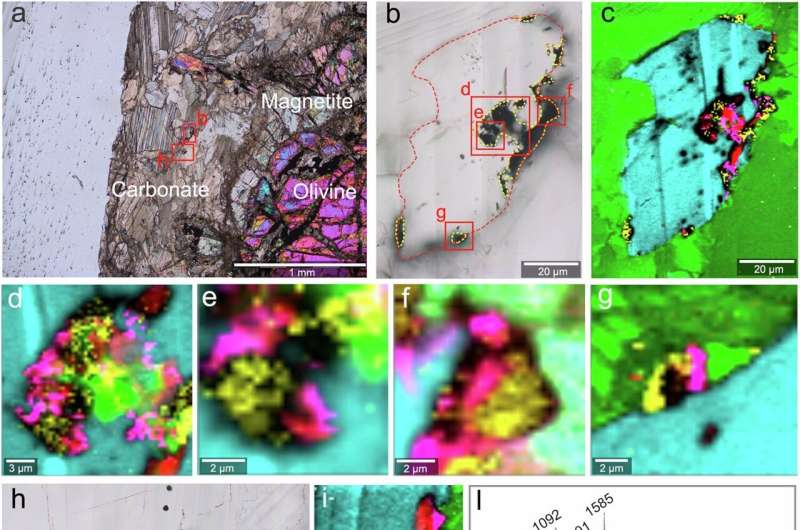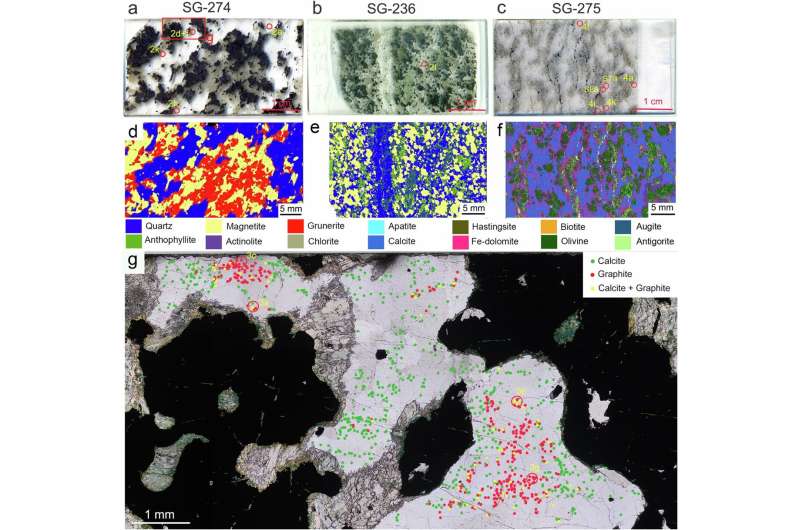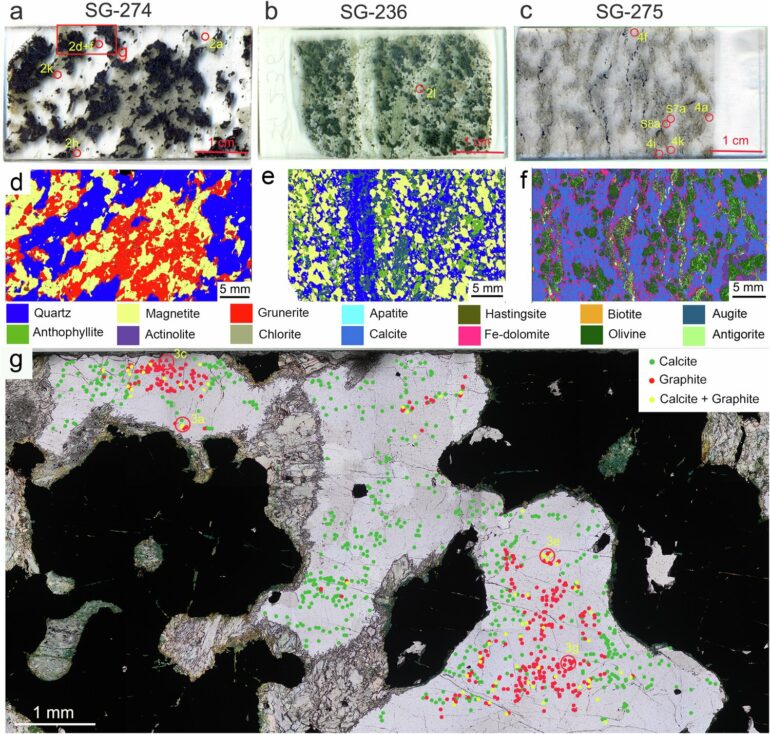The isotopic composition of carbon in iron formations from the Saglek-Hebron Complex in Nunatsiavut (northern Labrador) has been seen as evidence of the earliest traces of life on Earth. But a new study by the University of Ottawa, Carleton University and University College London suggests otherwise.
The study shows that the petrographic, geochemical and spectroscopic features in the graphite (the crystalline form of carbon) found in the Saglek-Hebron chemical sedimentary rocks are in fact “abiotic,” that is, nonliving physical or chemical aspects of an environment or devoid of life.
This enhances our understanding of how early biomass transformed on Earth, emphasizing the interaction between non-biological processes and ancient life remnants. Studying graphitic materials is key to decoding carbon cycling on the early Earth.
The study, titled “Abiotic synthesis of graphitic carbons in the Eoarchean Saglek-Hebron metasedimentary rocks,” was published in Nature Communications. This study is crucial to the search for ancient life on Earth and potentially on neighboring planets.
What the researchers did
Researchers revisited the isotopic signatures in these rocks. Their findings show that graphite may come from liquid substances containing carbon, hydrogen and oxygen, probably originating from the breakdown of old organic materials.

Graphitic carbon associations with magnetite (GraIV) in the Saglek-Hebron marble. © Nature Communications (2024). DOI: 10.1038/s41467-024-50134-1
“Our study focuses on chemical sedimentary rocks found in the Saglek-Hebron. These rocks, among the oldest on Earth, dating back 3.9 billion years, are created through oceanic precipitation. They include banded iron formations that may have been formed by the activity of bacteria,” explains co-author Jonathan O’Neil, an associate professor in the Department of Earth and Environmental Sciences at uOttawa.
“They are ideal for studying ancient biological processes. Our study challenges the previous interpretation that the carbon isotopic composition of these rocks is indicative of a biological origin, but rather suggesting abiotic characteristics. This prompts us to reconsider the processes responsible for isotopic signatures and how they could be linked to the action of micro-organisms,” O’Neil adds.
Research over the past year has focused on samples collected in Nunatsiavut during a field campaign in 2016. Petrological characterization was carried out in Ottawa and spectroscopic analysis of graphitic carbon was carried out in London, U.K.

Thin section scans of the Saglek-Hebron metasedimentary rocks in this study. © Nature Communications (2024). DOI: 10.1038/s41467-024-50134-1
Formed by fluids
“Graphitic carbon from chemical sedimentary rock samples has been studied in three sedimentary rock samples that are nearly 3.9 billion years old. Spectroscopic analysis of this graphitic carbon suggests that it was formed from metamorphic fluids (at temperatures of over 500oC), rather than by processes involving bacterial action,” says O’Neil.
The research shows that graphite in rocks may have formed without organic life, possibly through a carbon-extraction process. The degree of crystallization of the graphite correlates with the rocks’ metamorphism, indicating that metamorphism affects the preservation and change of carbon-based materials.
More information:
Zixiao Guo et al, Abiotic synthesis of graphitic carbons in the Eoarchean Saglek-Hebron metasedimentary rocks, Nature Communications (2024). DOI: 10.1038/s41467-024-50134-1
Provided by
University of Ottawa
Citation:
The earliest traces of life on Earth—researchers explore carbon in 3.9-billion-year-old Canadian rocks (2024, August 8)



